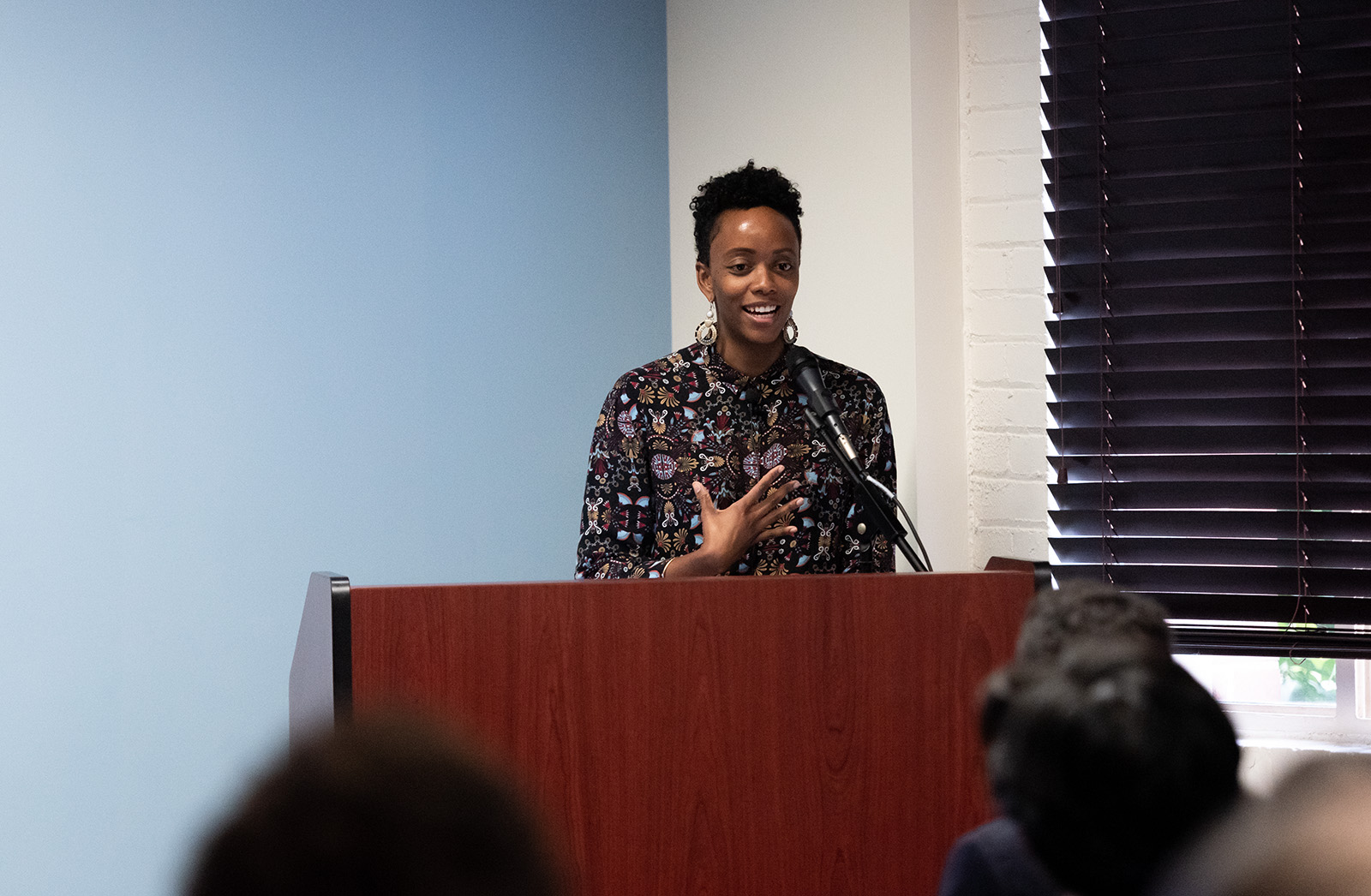Author Angela Flournoy inspires students to draw on everyday experiences in workshop

“The Turner House” author Angela Flournoy was recently named author-in-residence for winter 2019 at UCLA. She currently teaches a creative writing class, in which she encourages students to use their personal experiences as inspiration for their works. (Amy Dixon/Photo editor)
By Maris Tasaka
Feb. 4, 2019 10:10 p.m.
Angela Flournoy said writing her first novel was like opening doors – if she didn’t find what she was looking for behind the first door, she would turn around and try another.
Flournoy, a visiting associate professor, eventually published “The Turner House” in 2015 and has recently been named author-in-residence for the English department for winter 2019. Flournoy held a Q&A and reading of “The Turner House” on Jan. 29 in Kaplan Hall. She currently teaches English M138: “Topics in Creative Writing: Place and Perspective in Fiction” at UCLA. Her creative writing workshop focuses on characters and their relationships with their physical settings. “The Turner House,” explores the history of an African-American family, like her own, that lives in an area of Detroit, which becomes less desirable over time due to issues like housing segregation. Students in Flournoy’s class are encouraged to transform their day-to-day experiences into stories, she said.
“Once you make a decision, you have to keep making decisions (about characters’ motivations). … Basically, I compared it to my imagination opening doors for me,” Flournoy said. “It can be a little bit scary because you don’t know what’s behind (various doors). But once you get into a groove of it, you can see sort of all the way through the house.”
Flournoy prompts students to write two stories during the quarter – a shorter eight-page piece and a longer one, in which she provides students the option of writing a chapter that may fit into a full-length novel, or writing separate short stories. Each week, students read their classmates’ stories and provide them with detailed feedback on their work.
When looking for an author-in-residence, the creative writing faculty looks for a writer who is not only currently engaged in the practice of writing, but also who is willing to transfer their practical knowledge to students. Because Flournoy was a student when she began writing her novel, she is able to share the process of getting her work published with students who are interested in creative writing, said Creative Writing Program Director Fred D’Aguiar.
Another reason they selected Flournoy in particular was because her writing tends to highlight average people, as opposed to remarkable figures that may be the focus of other literature, D’Aguiar said.
“Ordinary people, she says, they tend to get overlooked. They don’t qualify for fiction, they’re not great in that sense,” D’Aguiar said. “But she shows how the ordinary is really heraldic or important.”
Flournoy applied this concept in her novel “The Turner House,” which revolves around the 13 children of the Turner family. When their mother falls ill, the siblings must decide what to do about the depreciating value of their childhood home in Detroit. Throughout the story, Flournoy said she wanted to explore people grappling with roles they do not feel capable of fulfilling.
“Being one person in a part of something so big could really influence your relationship with the family overall – the way that birth order could influence how you felt about what you owed to your siblings or your parents,” Flournoy said. “I tried to show that by picking certain characters to focus on like the oldest and the youngest.”
In addition to being a resource for her students who are interested in writing and storytelling, Flournoy said she aims to help nurture students’ initial creative impulses so they are able to develop their ideas rather than scrap them.
Eric Fram, a fourth-year English student with a concentration in creative writing, said Flournoy guides students in the workshop by helping them see how they can relate their own experiences and creative endeavors to each other. Fram said Flournoy does this by showing them that although they may not have the same experiences as their classmates, there’s a universality to the creative process drawing from daily life that allows it to act as a mirror for the everyday.
“She provides her own feedback but also encourages us to come to our own conclusions within the frameworks that we’re critiquing and workshopping each other’s works, specifically character and setting,” Fram said.
In the workshop, Flournoy said she frequently tells her students they need to find “skin in the game” – feeling as if there are real, emotional or philosophical questions at stake within their story. It’s not just about a simple plot. Instead, Flournoy said, students must question how their characters relate to the situations they have been written into. Just because they haven’t seen an example of a successful story that has to do with how they grew up or the experiences they’ve had, doesn’t mean their story can’t fill that void, Flournoy said.
“It’s not something I take for granted: the opportunity to share kind of the information that I love to talk about all the time anyway with people who have something that they can benefit from hearing from me,” Flournoy said.


